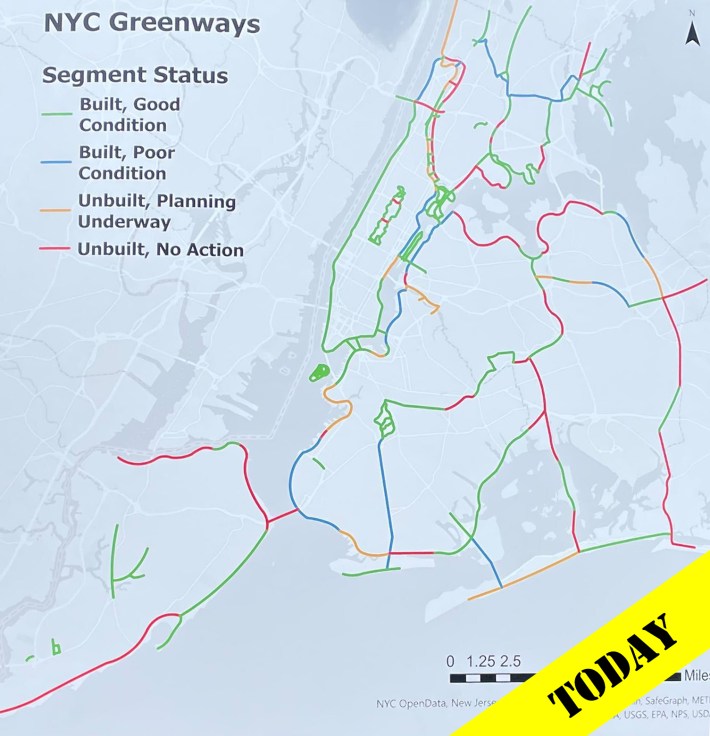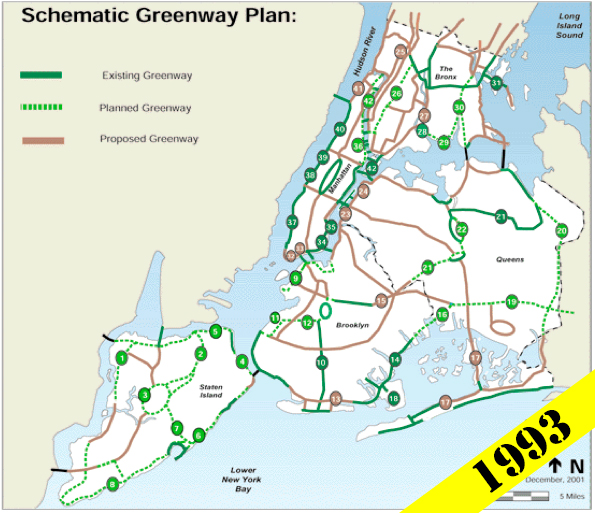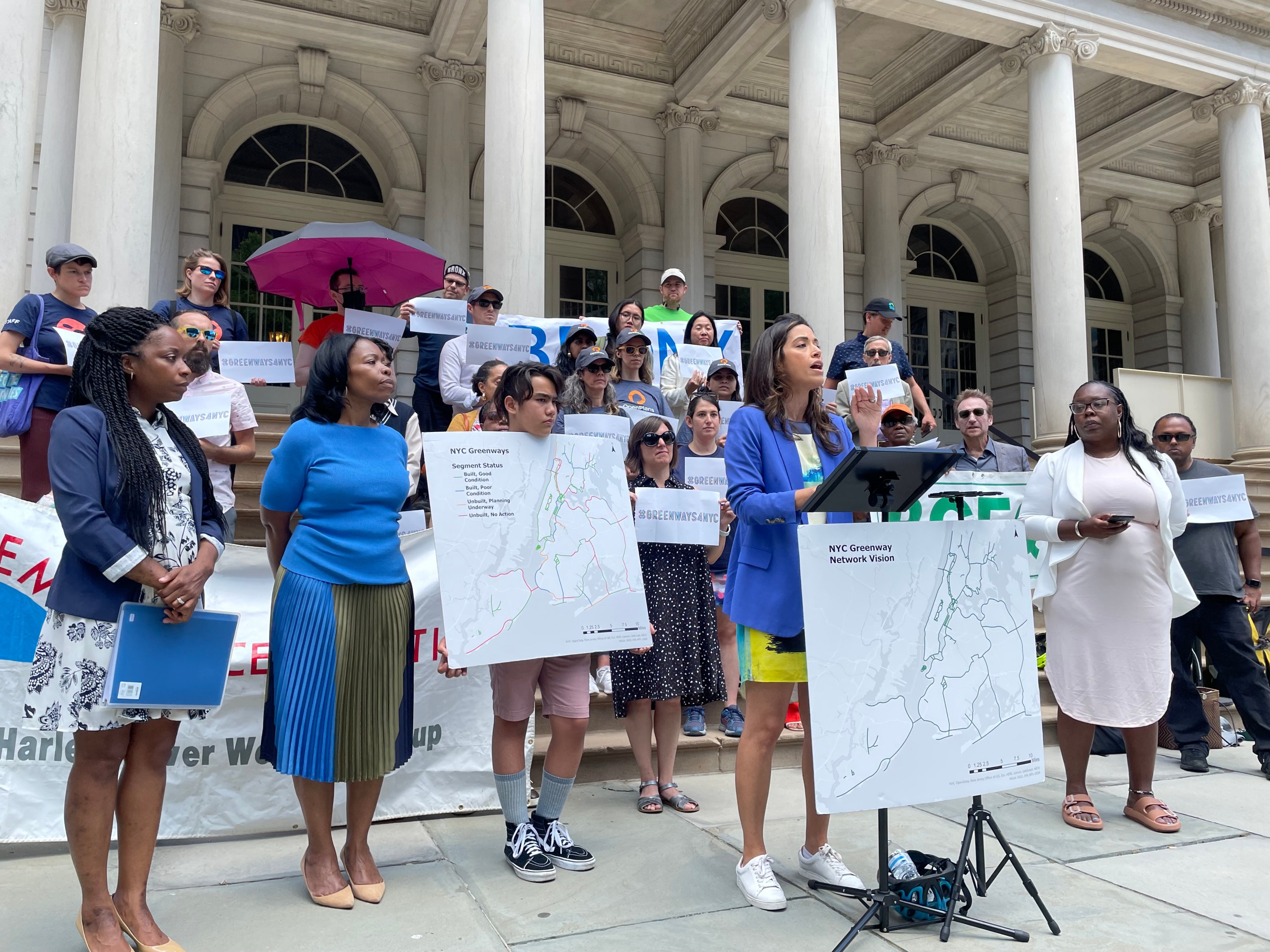No fuss, no fight, more greenways.
Department of Transportation Commissioner Ydanis Rodriguez said on Tuesday that the Adams administration wholeheartedly supports a proposed City Council bill to create a Greenways Master Plan, a new attempt to formalize the expansion of — and, most important, the maintenance of — the city's greenway network.
"This administration welcomes this bill, which is in line with both our vision for a greener, more connected city and ongoing effort to achieve this vision," Rodriguez told the Council's Transportation Committee.
Advocates said that it was only natural that a mayor who's been so committed to cycling and safe streets would support a bill like the Carlina Rivera proposal, and were pleased to hear it had Adams's support.

"This aligns with the mayor's previous commitments to open space, green transportation and equity in city services," said Brooklyn Greenway Initiative Advocacy and Greenways Projects Coordinator Brian Hedden. "We're glad the bill has his team's backing. It's one outcome of the tireless advocacy efforts of a wide array of community groups."
The bill tasks a number of city agencies with creating and maintaining a fully built out greenway network that updates the city's original 1993 plan (hat tip, Mayor Dinkins). Rivera pointed out that that greenway proposal still hasn't come close to being completed, which leaves it up to the city's current leaders to finish the job.
"Many of New York's 100 miles of greenways exist only on paper with no cohesive city network," she said at a rally before the bill hearing. "And so today New York City's greenway system is currently a collection of fragments We want to change that."
Under the proposed bill, the departments of Transportation, Parks, City Planning, Design and Construction and Environmental Protection would have to present a master plan to build and maintain a five-borough greenway network by next July 1.
Rodriguez told the Council that the proposed bill would also expand equity, since a centralized plan could expand greenways to neighborhoods that typically have been left out of the planning process.

"Low- and moderate-income New Yorkers will especially benefit from a more comprehensive greenway network, as non-motorized transportation modes have lower costs to purchase, operate, and maintain," he said.
In a city where existing greenways such as the Ocean Parkway and Shore Parkway paths have been left to fall apart over the years even in the face of numerous community complaints, Rivera said that master plan could help fix historic and current screwups.
"The first greenway was created 100 years ago on Ocean Parkway, and it is a great model," said Rivera. "We also know that even that greenway needs a lot of infrastructure [repair] that is absolutely critical to our public health and safety.
The bill would also fix another historical oversight, according to Bike New York Director of Advocacy and Communications Jon Orcutt, who used his testimony to praise the bill for making a small but crucial change in who is ultimately responsible for the effort to build and maintain the separated paths.
"We've had a greenway plan on paper since 1993 that was created by the City Planning Department, but City Planning doesn't build or maintain things," he said. "Having that plan there was a misplaced effort. The master plan bill before you would move responsibility for a citywide plan to the agencies that actually built greenways."
In terms of future plans, DOT staff told the Council that the agency wouldn't just be sitting around waiting for the bill to become law. For starters, the agency has applied for a $7.25-million federal grant to help pay for its efforts to fill in greenway gaps. But agency staff said they would be working even as the legislative process and the grant — which is a tiny fraction of the money needed to simply maintain the existing greenways — inched forward.
"We're not waiting around for the grant to come across, hopefully we get it." said Sean Quinn, the DOT assistant commissioner for Street Improvement Programs. "Part of our next steps is to identify five key gap areas and five large study areas where we can make future expansions."






